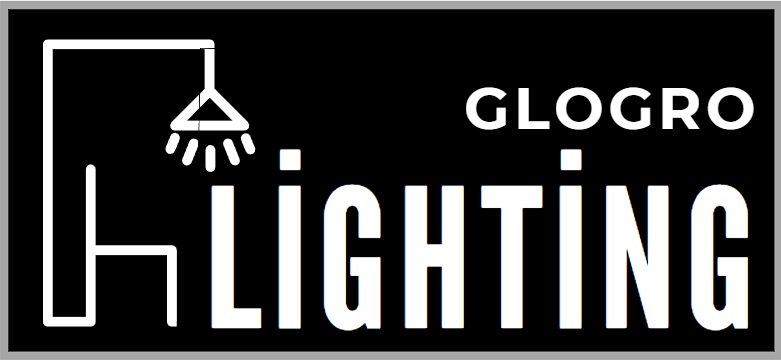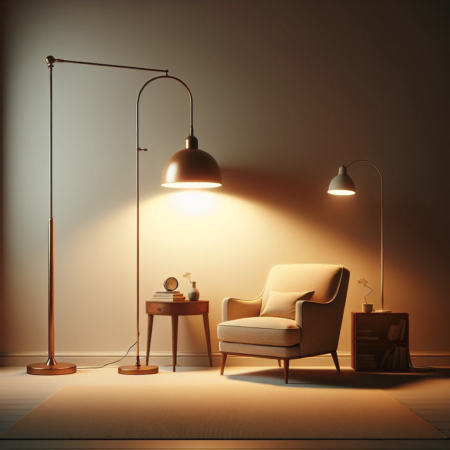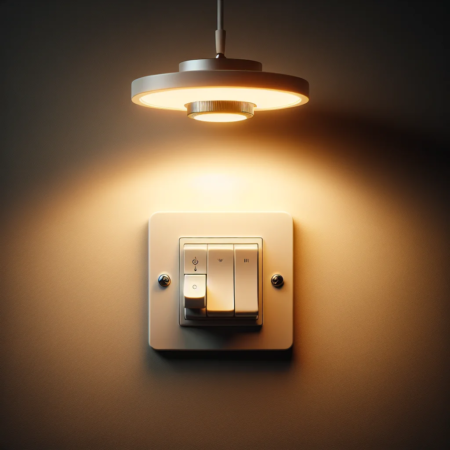Check out this Youtube video: “How to Replace Recessed Lighting with LED | The Home Depot” and learn how to upgrade your ceiling lights to energy-efficient LED options!

Contents
Understanding LED Ceiling Lights
LED lights have revolutionized the way we illuminate our homes and spaces. These lights use light-emitting diodes to produce light, making them more energy-efficient and durable compared to traditional lighting options.
LED lights come in various forms, ranging from replacement bulbs to integrated fixtures such as ceiling fans and recessed downlights. This versatility allows for diverse lighting solutions to suit different needs and preferences.
Explanation of LED lights
LED ceiling lights offer a myriad of benefits, making them a popular choice among consumers. Not only do they consume up to 90% less energy than incandescent lighting, but they also last significantly longer, reducing maintenance costs.
Additionally, LED lights provide superior light quality and are more durable, ensuring long-term reliability. By incorporating LED ceiling lights into your home, you can enjoy enhanced illumination while reducing energy consumption and operating expenses.
Benefits of using LED ceiling lights
When considering lighting options for your home, it’s essential to prioritize energy efficiency and cost savings. LED ceiling lights can significantly contribute to these aspects, offering a substantial reduction in energy costs and maintenance expenses.
By switching to LED lighting, the average household can save about $225 in energy costs per year. Furthermore, the durability and longevity of LED lights ensure a reliable and long-lasting lighting solution, reducing the need for frequent replacements and maintenance.
The widespread adoption of LED ceiling lights reflects the growing recognition of their superior performance and cost-effective benefits. As consumers increasingly prioritize sustainability and efficiency, LED lights continue to serve as an exceptional lighting solution for modern homes and commercial spaces.
Safety Precautions Before Replacement
When replacing LED ceiling lights, safety should be the top priority. Taking the necessary precautions before getting started is crucial to avoid potential electrical hazards.
Importance of turning off power
Turning off the power supply is crucial to prevent electric shock or injury while working on the LED ceiling lights. Before replacement, turn off the circuit breaker that controls the lighting fixture to ensure there is no live electricity flowing through the wires.
Always use a non-contact voltage tester to double-check if the power is indeed turned off before proceeding with any electrical work. This small but essential tool helps to verify that the wires are safe to handle.
In addition to turning off the power, it’s advisable to place a note or lock the electrical panel to inform others that work is being done on the lights and the power should not be turned back on until the task is completed.
Tips for handling electrical components safely
Handling electrical components safely is crucial for any electrical project. When working with LED ceiling lights, it’s important to wear insulated gloves and eye protection to safeguard yourself from any potential electrical mishaps.
Further, ensure that any loose clothing or jewelry is removed before working on the ceiling lights to avoid entanglement with electrical components. It’s also beneficial to use insulated tools to minimize the risk of electrical conductivity.
Proper disposal of old LED bulbs is essential as well. Always handle the old bulbs with care, and if they are broken, dispose of them following the manufacturer’s recommendations to prevent any harm caused by broken glass or exposure to harmful materials.
Lastly, it’s crucial to read and understand the manufacturer’s instructions for the LED ceiling lights before beginning the replacement process. Following the specific guidelines provided will help ensure a safe and successful replacement.
By adhering to these safety precautions, individuals can confidently and safely replace LED ceiling lights without being exposed to unnecessary electrical hazards.
Step-by-Step Guide on How to Replace LED Ceiling Lights
Before starting, gather all the essential tools and materials, such as a measuring tape, pencil, screwdriver set, wire strippers, wire connectors, and a drill. Turn off the power to the light fixture by switching off the circuit in the electrical panel and double-check with a voltage tester. Remove the old fixture, label the wires, and then install the new LED ceiling light by marking the position, installing mounting hardware, and connecting the wires according to the manufacturer’s instructions.
Test the new fixture to ensure it functions properly before making any necessary adjustments.
Gather necessary tools and materials
Before starting, make sure to gather all the essential tools and materials. You’ll need a measuring tape, pencil or marker, screwdriver set, wire strippers, wire connectors, and a drill.
Turn off power to the light fixture
Safety first! Go to your electrical panel and switch off the circuit that powers the ceiling light fixture.
Use a voltage tester to double-check that the power is indeed off before proceeding.
Remove the old fixture and disconnect the wires
Carefully remove any decorative pieces covering the fixture. Then, disconnect the wiring from the old fixture.
Remember to label the wires or take a photo for easy reference when installing the new LED ceiling light.
Install the new LED ceiling light
Following the manufacturer’s instructions, mark the position for the new light fixture using a pencil. Use a drill to install any necessary mounting hardware.
Connect the wires of the new LED ceiling light to the corresponding wires in the electrical box. Secure the fixture in place and add any decorative elements.
Test the new fixture
Once the new LED ceiling light is installed, it’s time to test it. Turn the power back on at the electrical panel and flip the light switch.
Ensure that the light functions properly and make any necessary adjustments.
Common Issues and Troubleshooting
LED ceiling light replacement may present potential issues such as compatibility, electrical wiring, and fixture housing. To address these problems, thorough research on the specific LED lights and consulting with professionals is essential to ensure compatibility. Seek assistance from an electrician for any electrical wiring challenges and thoroughly inspect fixture housing for damage to make necessary repairs prior to the replacement. These proactive measures will help mitigate potential issues and ensure a successful and safe LED ceiling light replacement process.
Yes.
Identifying potential problems during replacement
When it comes to replacing LED ceiling lights, there are a few potential issues that may arise during the process. One common problem is compatibility.
LED lights come in various sizes and types, so ensuring that the replacement lights match the existing fixtures is crucial. Additionally, electrical wiring can present a challenge, especially if it differs from the standard wiring system.
It’s important to check the voltage and circuit compatibility to avoid any issues. Furthermore, issues related to the fixture’s housing, such as corrosion or damage, should be carefully examined to ensure a proper fit for the new LED lights.
Solutions for common issues
To address these potential problems, it is essential to conduct thorough research on the specific LED ceiling lights being replaced. Ensuring compatibility through measurements and consulting with the manufacturer or a knowledgeable professional can help mitigate issues related to size and type.
When dealing with electrical wiring challenges, seeking the expertise of an electrician is advisable to ensure safety and proper installation. Additionally, examining the fixture’s housing for any signs of damage and addressing them prior to the replacement can prevent future complications.
| Potential Problem | Solution |
|---|---|
| Compatibility | Research specific LED lights, consult professional |
| Electrical Wiring | Seek assistance from an electrician |
| Fixture Housing | Inspect for damage and make necessary repairs |
Identifying potential problems during LED ceiling light replacement and implementing the appropriate solutions are crucial for a successful and safe installation process. By addressing compatibility, electrical wiring, and fixture housing issues, individuals can ensure a seamless replacement experience and optimal functionality of the new LED lights.
When it comes to the essential lighting fixtures in our homes, LED ceiling lightsMaking the switch to LED ceiling lights can significantly reduce energy consumption and maintenance costs while providing long-lasting, quality illumination for your living spaces.
How to Replace LED Ceiling Lights?
To replace LED ceiling lights, start by turning off the power to the existing light fixture and removing it carefully to avoid damaging the wiring. Then, install the new LED ceiling light fixture by connecting the wiring according to the manufacturer’s instructions and securely attaching it to the ceiling. Once the new light is installed, restore power, test the light, and clean up the work area to complete the replacement process.
Step-by-step process for replacing LED ceiling lights
To replace LED ceiling lights, follow this step-by-step process:
-
Turn off the Power: Before starting any work, ensure to switch off the power to the existing light fixture by flipping the circuit breaker. This is crucial for safety to avoid electric shock.
-
Remove the Existing Fixture: Unscrew the existing LED ceiling light fixture, gently lower it down, and disconnect the wiring. Be careful not to damage the wiring during the removal process.
-
Install the New Fixture: Once the old fixture is removed, connect the wiring of the new LED ceiling light fixture according to the manufacturer’s instructions. Securely attach the fixture to the ceiling and make sure it is properly aligned.
-
Restore Power and Test the Light: Once the new LED ceiling light is installed, restore the power and test the light to ensure it is functioning properly. If the light works as expected, then the installation process is complete.
-
Dispose of Old Fixtures: Properly dispose of the old LED ceiling light fixture and any packaging material in accordance with local regulations or recycling guidelines.
-
Inspect and Clean Up: Finally, inspect the area for any remaining debris, and clean up the work area to ensure a tidy and finished installation.
By following these steps, you can successfully replace LED ceiling lights in your home or workspace and enjoy improved lighting efficiency.





